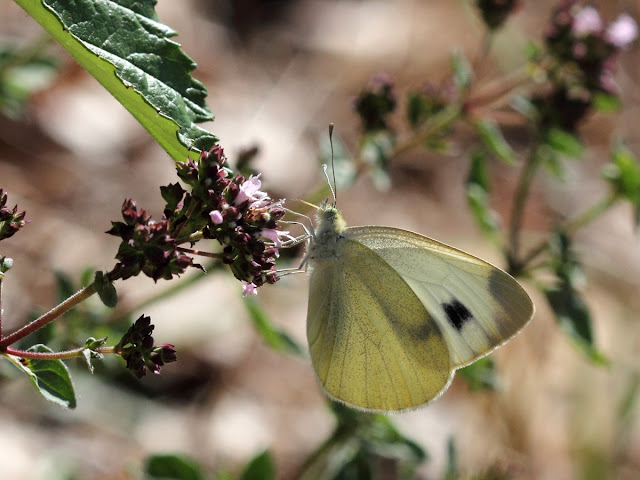Melitaea didyma
In the Moselle valley this species is present but I guess I just missed out the first generation (250m), in the Swäbische Alb however the species was fresh and common (800m).
Melitaea britomartis
My main target for this trip. During summer trips to the east I always missed out on this species being slightly too late. So I wanted to see them a bit more nearby and the closest to find them near Belgium are some grasslands in the submontane zone of the Swäbische Alb. As most of you know this species is in a group of species that is really difficult to recognise in the field (subgenus Mellicta, sometimes called the Melitaea athalia-group). Lot of the features mentioned in the fieldguides for these species are very variable individually making it very difficult to point an individual to a species (see for example this article)
Lafranchis gives a method in his guide to check genitalia of butterflies in the field. He gives this for several of groups of butterflies.
Frankly I think for the Leptidea species his images are the worst you could ever use to see the difference between the cryptic Leptidea species and difference in genitalia between Leptidea sinapis and Leptidea reali/juvernica can't be seen in the field. Anyone using the Lafranchis guide should make a big black cross over the drawings of the Leptidea genitalia!
For the orange Hipparchia species as well I don't think this method is very reliable as often you have to make an interpretation of the scale of different parts of the valves which is very difficult in the field. In the black Hipparchia species you just have to count the bristles on the Julien organ what seems pretty easy in the field to me.
In the Melitaea species the shape of the valves are clearly different between species so there the method leads to more reliable determinations too imo. You need some experience in handling the butterflies and you need some experience to evaluate some individual variation in the shape of the valves. The image of the M. britomartis valve in Lafranchis is not that good in my opinion, the image in Slamka however was spot on.
At the same location where I had these M. britomartis I had M. aurelia and M. athalia males! Mostly M. athalia was easily recognised in the field as they are a bit bigger and clearly have a more direct flight than the smaller M. britomartis and M. aurelia. Males of both these species have a very specific flight with fast wing beats making them stand out between the M. athalia males.
male underside
same individual, male upperside
Male genitalia checked in the field with the insert showing the valve of a genital preparation (edited picture from lepiforum). With a 20x loupe details of the valve shape can easily be seen.
Female, in front view this one has quite some black hairs on the palps, strongly indicating it not to be M. aurelia (variable in M. britomartis but probably almost always orange or at least pale in M. aurelia). The orangeish color in the marginal line is typical (but variable) for M. britomartis.
Argynnis niobe
This species used to be present in the Belgian coastal dunes as well as in the calcareous grasslands of the south but now has completely disappeared. It is still present however just south of Aachen, less than 10km of the Belgian border. Several individuals were present when I passed that location but photography was impossible, all seemed to be males actively searching for females and gathering around some old pine trees using them to do some kind of hill topping. I saw the species in the south of the Black Forest as well where I could make some pictures.
Boloria titania
I was pleasantly surprised to find this species in the Black Forest, the main field guides don't give this as a part of the distribution. Of course when one does a bit more research this is well known and the species is present just north up to Triberg (southern 1/3 of the Black Forest).
Coenonympha tullia
I had seen this species before but then was unable to make good pictures, so I was hoping to make some pictures on this trip. I found it in the same bog I saw Colias palaeno and Plebejus optilete. Last confirmed sighting in Belgium was in 2006 so this species has most probably been lost.
Erebia meolans
On the high parts of the Black Forest this is one of the more common butterflies. Together with the High Vosges in neighboring France these are the north-westernmost populations of this species.
upperside male
underside female





























